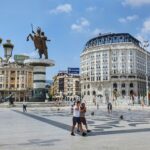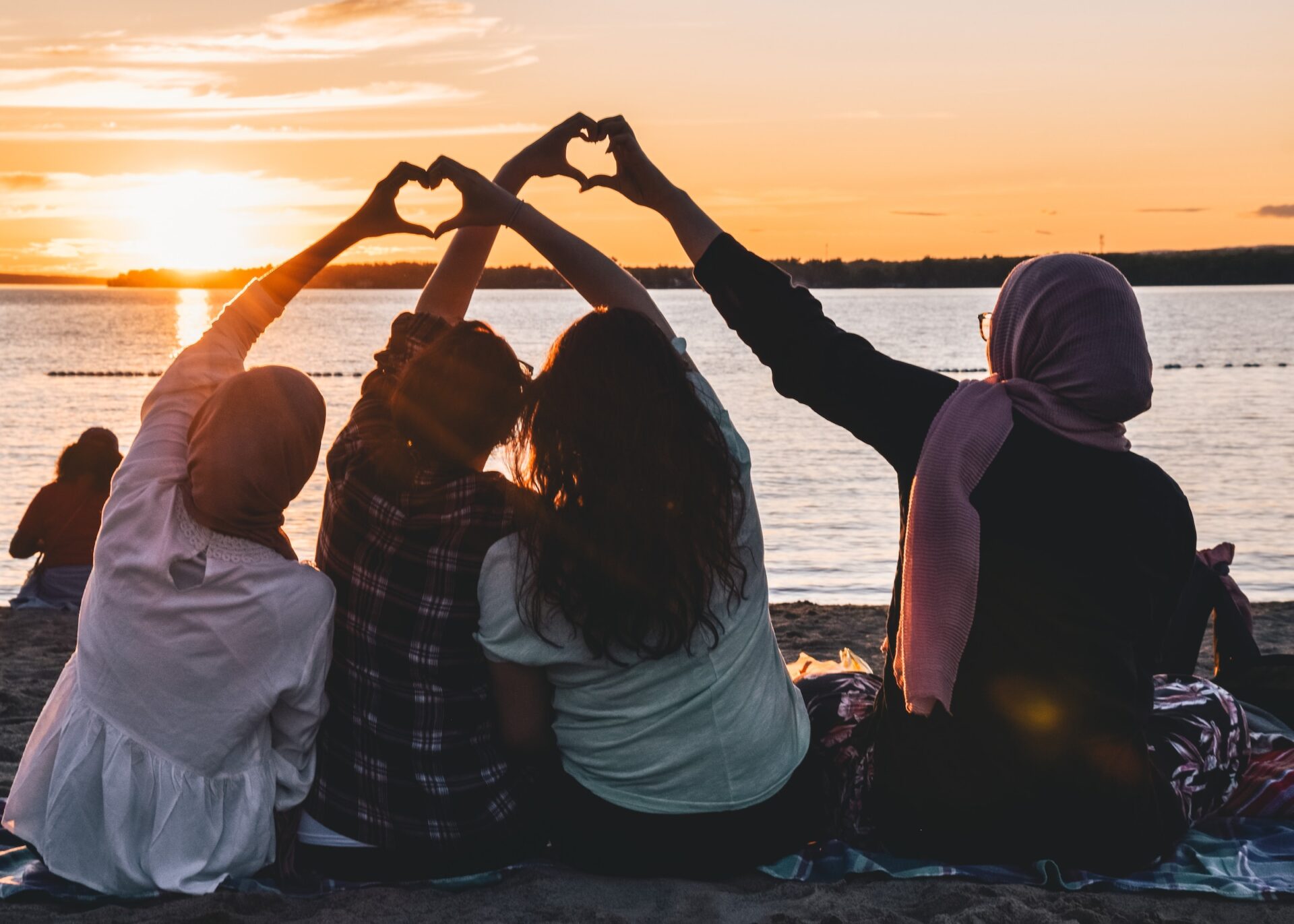I remember walking into the Chicago meeting room last November, feeling sobered by the day’s agenda. However, I was also glad because I was about to enter a room full of mentors, leaders, and colleagues who gave me hope and courage and who cared about our common future in inspiring ways. I was wearing my power shoes that my mentor had helped me pick out.
I was ready to discuss Doomsday.
The Bulletin of Atomic Scientists’ Science and Security Board was meeting to decide the movement of the Doomsday Clock. The Clock is a symbol that warns the public about how close we are to destroying our world with dangerous technologies of our own making. The hand of the clock moves closer or farther to “midnight” based on how well humanity is doing at managing its most threatening problems. The Clock has been doing this since 1947. Initially speaking simply of nuclear risk, it now reflects the state of the world regarding climate risk, biosecurity, and disruptive technologies. This year, that discussion reached a worrying conclusion. The Doomsday Clock would be set to 90 seconds to midnight. This is the closest it has ever been.
It can be humbling to talk about Doomsday in one of the most beautiful cities in the world, surrounded by some of the greatest hearts and minds of our time. I was joining these discussions as a Board Fellow at the Bulletin. I am a PhD student in International Security Studies, and my day job is to think about how we might do more and better to help secure our collective future.
My interest in international security is prompted by deep memories — the sounds of rattling windows and exploding ammunition during formative stages as I grew up in Islamabad. This is not just my story, it belongs to many others of my generation. It was spurred by a burgeoning awareness that the power structures that decided the parameters of security did not include me. I — whatever that represented — was not the generation, the demographic, the voice, or the regional or global actor of concern at that time. I wanted to change that.
We tell the story of the Doomsday Clock and remember that for some, pushing back the clock is an active, daily struggle and that they fight for all of us and for the freedoms that affect everyone.
With that understanding, “security” and building security becomes a broader question. There are people around the world who, over time, have been deeply affected by actions and ideas that were not of their own making. It is important to remember how they can be better empowered to tell their stories and widen their imaginations so that they too might generate ideas of what security can mean — and that they are not excluded from notions of security that serve some to the exclusion of others. They, too, must be able to see “secure” pathways to enact their dreams and contribute to the success of the human endeavor in partnership with the natural world, and not in spite of, but perhaps entwined with other people around them. Where they live their lives and how they tell their stories must be supported by the infrastructures and communities they occupy. If the Clock continues to tick toward midnight, this may become harder and harder for all of us.
In this way, the Doomsday Clock is both a symbol of loss and a reminder of everything left to save. It reminds us of the good hidden behind awkward corners and the hope that burns strong in unexpected places. The movements led by children ring the loudest, the schools and the books kept alive by women by sheer force of will in parts of the world where the pursuit of knowledge is no longer meant to be available to them. It is the bombs reported by survivors and the oppression opposed by throngs in the street, by one step in front of the other, and the force of hope. The Clock is a reminder of all these forces and more, and our responsibility to hear, understand, and respond to these voices, these women, children, and communities leading the charge around the world.
We are not alone in our struggles. The lights that burn strong in some parts of the world are an inspiration to all of us. We tell the story of the Doomsday Clock and remember that for some, pushing back the clock is an active, daily struggle and that they fight for all of us and for the freedoms that affect everyone.
When we look at the Doomsday Clock, we should not just think of the end of the world as we, humans, perceive it, but the end of the world for the ecosystems that support us on the massive, beautiful planet that we call home. We do not exist merely on the planet but are embedded within its systems and processes. A radioactive explosion at one end will affect the other. A climate catastrophe in one corner will leave no corner untouched. A virus can spread quickly and uncontrollably. And disruptive technology is raising the pace of change faster than we can keep up. The environment is not “out there” it is “in here,” the place where we change and grow and breathe. It is not limited by geography or, ironically, by time.
At a luncheon after this year’s Doomsday Clock announcement, President Juan Manuel Santos of Colombia asserted categorically that we cannot solve the climate crisis unless we treat Nature and the Earth as equals. A purely human-centered story is serving neither humanity nor the planet at this point and including the more-than-human world as a partner and stakeholder may well be what is needed. This means we must also listen to voices that make no sound and pay attention to the world with all its inhabitants. We must come back into conversation with rivers and oceans and forests, and with the birds and animals on the verge of extinction so that our own story can go on uninterrupted. Maybe the revolution is in ourselves as much as it is “out there” or “somewhere else.”
And so, it may also be useful to claim the Clock as a personal tool, to remember or redefine our places in the world, that our actions or lack of action can have consequences. How can we reform our identities, how we see ourselves and each other, the world, and our place in it to ensure we are able to rise to the challenges of the future?
The Clock does not recognize national boundaries and instead invites us to claim a “planetary identity,” as said by Bulletin Science and Security Board Member Rob Socolow, together with all the denizens of the Earth. Our neighborhood can be as small as our own cul-de-sac or as large as the Northern Hemisphere. This does not mean we are responsible for every action that takes place on that horizon, but that the role we are being asked to play is no longer merely personal. Who we are and what we do has meaning for other people, whether we see them or not. Within that, there is agency, power, and also hope.
The Doomsday Clock is a battle cry meant to rile us up and move us, not freeze us into inaction. As Bulletin CEO Rachel Bronson said during the Clock Announcement this year, the hope is that where these risks are man-made, humanity can be the key to solving them. This is why each second on the Clock is so important.
The Clock is a symbol of hope and life that can still be claimed or reclaimed, where human beings with informed, sensitive and practical perspectives can make choices, personally or in communities, to move the needle one way or the other. I believe we are all part of this unfolding story, wherever we are in the world, finding our own commitments and our own contributions in partnership with our neighbors, friends, leaders, and nature, finding new ways to build into the future that is connected, hopeful and grounded in place and space while at the same time recognizing we are part of a larger story even if all parts of it may not be visible at this time. That we are not alone, that there are friends on the other side of the planet and on the other side of the street who are fighting for the same story, where we are empowered with hope and purpose and community, and finding new ways to work together, in openness, acceptance, and communication.
The Doomsday Clock is a reminder of all this and more. On the one hand, the time represents all that we have lost. On the other, each second represents the ways we could turn things around, rally around the remainder of the Clock and find new ways to support one another. It is the time we have left that matters because it presents us with opportunities to do something new and different. We might see in each second of the Clock, the lives that are still thriving, the ecosystems still intact, and the ways that exist to make a difference.
Each second is a human life, but also a way of life that is alive, loving, caring, and kind to ourselves and the species around us, the places where freedom is still celebrated. Humanity has done so much to arrive at this moment. What must we do now, together, to build a living future?





















